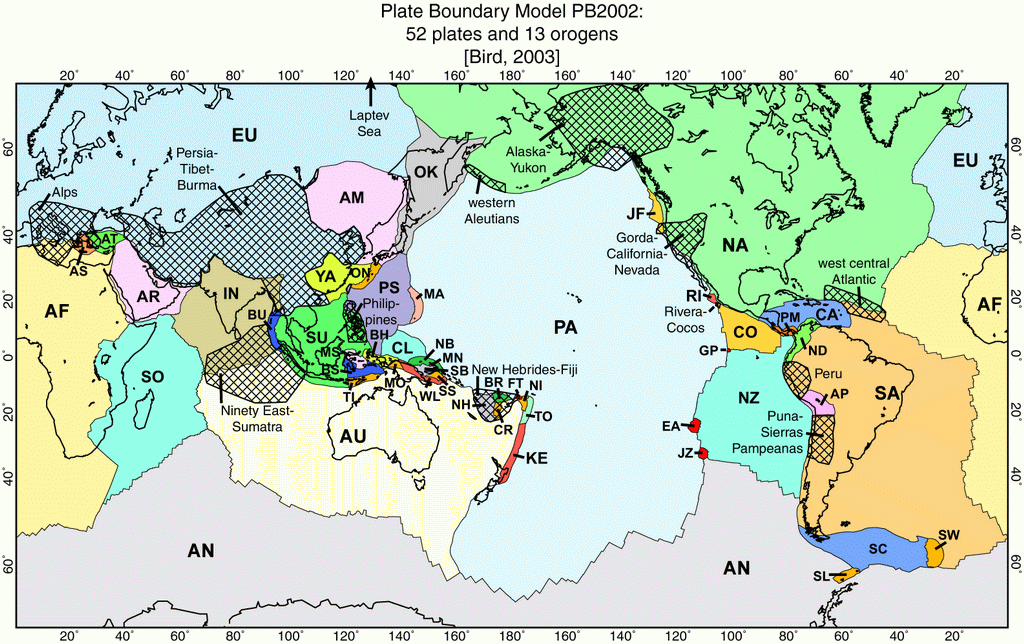Step 25: Choose a velocity reference frame
The primary quantities that NeoKinema will calculate are the
long-term-average horizontal velocity vectors for all the nodes in your .feg
file.
Many other interesting variables will also be derived from these (fault offset
rates, strain-rates, stress-directions, interseismic velocities and
strain-rates, …)
but it is the horizontal components of long-term-average velocity which are
primary.
Horizontal velocities on the surface of a planet are not even
meaningful unless they are accompanied by a definition of some rigid
framework which is treated, by convention, as “not moving.”
All geodesists and tectonophysicists understand that this choice is somewhat
arbitrary; still it cannot be avoided!
The name of the rigid framework is known (generically) as the “velocity
reference frame”.
Specifically, NeoKinema requires that your choice of velocity reference frame must
be one of the 52 plates of the PB2002 model of Bird [2003],
which are mapped in the color figure below.
If you created a GPS-velocity (.gps) file in Step 16, then probably
your choice is already made;
the velocity reference frame for your NeoKinema model should be the same
as the velocity reference frame for your GPS-velocity data.
If you are NOT using GPS data in your NeoKinema model, then the
choice of reference frame is free.
However, most readers will find your results easier to understand if the rigid
plate defining your velocity reference frame is either inside your model
area
(defined by your .feg file), or close to it. Velocity
frames located on the other side of the planet are mathematically valid, but
confusing.
In the end, choose one of the 2-letter plate abbreviations from the map
below (or from Bird [2003]),
and enter it in line #22 of your NeoKinema-parameter file
(which we began to build in Step 8, based on model
file parameters_for_NeoKinema.nki.txt).
